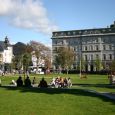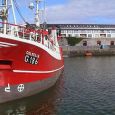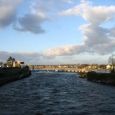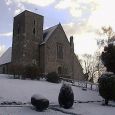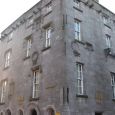Galway
Advertisement
By Air
Over the past two decades, Galway Airport has developed from a small air strip to a fully-fledged regional airport. The airport now offers daily services to Dublin, Cardiff, London Luton, Manchester, Liverpool, Edinburgh, Belfast City, Birmingham and Cork as well as Lorient, in France.
By Rail
Train is the ideal way of travelling from Dublin to Galway. The journey time is about 3 hours and a bar and restaurant service is available on most trains. Irish Rail runs a regular train service to Dublin stopping off at major towns. Advance booking is not usually necessary.
Towns serviced along this route include Athenry, Ballinasloe, Athlone, Tullamore and Kildare. There are no direct routes to other cities. Ceannt Station in Galway City is just off Eyre Square in the centre of the city.
By Bus
There are frequent daily services to Galway from Dublin. There is also a special service to and from Dublin Airport. The journey takes 3 hours, 25 minutes. The main bus station in Galway is in Eyre Square.
Lynch's Castle
Lynch's Castle (16th C.: National Monument), a large gray building with coats of arms on the facade, now occupied by a bank, was the residence of the Lynches, an aristocratic family which provided several mayors of Galway. One of the Lynches, while in office as mayor, condemned his own son to death for the murder of a young Spanish visitor and carried out the sentence with his own hands when no one else was willing to do it: hence the origin of the term "lynch law." A black marble tablet on the wall of the old prison in Market Street marks the spot where the execution is said to have taken place.
St Nicholas's Church
St Nicholas's Church (National Monument), in Market Street in Galway's central area, was built in the 14th C. and, although much altered in later centuries, has preserved the aspect of a medieval parish church. Notable features are the triple gables of the west front, the gargoyles (rare in Ireland) and, in the interior, a number of tombs and a reader's desk.
Salmon Weir Bridge
The River Corrib is spanned by three bridges. The one farthest upstream, built in 1818, is the Salmon Weir Bridge, where hundreds of salmon can be seen in spring on their way up river to the huge expanse of Lough Corrib - a journey of only 4mi/6km from the sea.
There is a strong tidal movement on the river here, with a rapid ebb at low tide and an equally rapid flow upstream when the tide changes.
The middle bridge, O'Brien's Bridge, is the oldest, its existence being first recorded in 1342. The Claddagh Bridge (a swing bridge) at the south end of the town takes its name from an old fishermen's quarter on the right bank of the Corrib which was occupied for centuries by a fishermen's guild but has now given place to modern buildings. The only relic of the old guild is the "Claddagh ring," a traditional form of wedding ring with two hands clasping a heart which was worn as an amulet and handed down from mother to daughter.
Galway Harbor
Near the Spanish Arch is the busy Galway harbor. The boats to the Aran Islands sail from the east side of the harbor, at the end of Lough Atalia Road
Eyre Square
n the central area of Galway is Eyre Square (18th C.), now landscaped as a memorial to U.S. President J. F. Kennedy (J. F. Kennedy Memorial Garden) who was of Irish descent.
June - September


